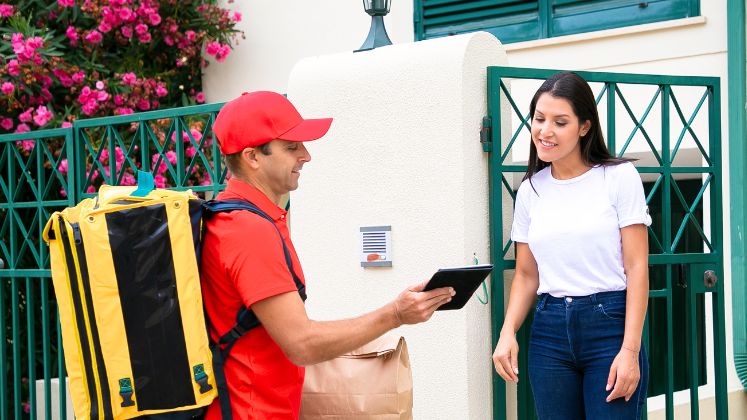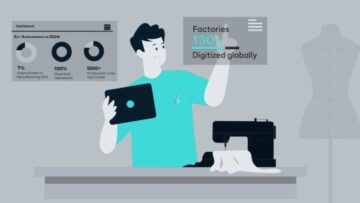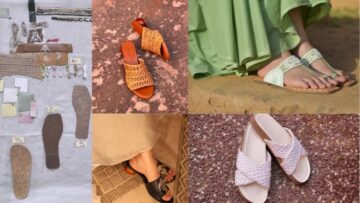
‘Q-Commerce is well-suited for emerging brands’
Anurag Srivastava, CEO-Director, Mad Over Print
In today’s fast-paced e-commerce world, quick commerce (Q-Commerce) is shaking things up. Originally focused on grocery deliveries, platforms like Zepto, Swiggy Instamart and Blinkit are now branching into fashion. For fashion brands like Mad Over Print, this shift is a big chance to meet consumers’ growing demand for speedy deliveries.
To succeed in Q-commerce, careful planning is key. One smart move is to set up small, local warehouses. Our warehouses range in size from 700 to 1500 square feet, depending on the market size in each city. We currently have warehouses in Bengaluru and Mumbai, with plans to expand to Pune, Hyderabad and Kolkata. These warehouses are strategically located near the warehouses of our quick commerce partners to facilitate faster delivery times. Local fulfilment centres act as mini-warehouses for quick supply to the larger warehouses of Q-commerce brands. These centres are crucial in ensuring that popular items are always in stock and can be quickly dispatched to meet immediate consumer demands. Managing inventory in Q-commerce is more dynamic compared to traditional retail and online models. We receive constant data from our Q-commerce partners about stock availability at various centres. This real-time data allows us to keep our inventory updated and meet monthly projections provided by these partners. We use advanced inventory management systems to track stock levels, forecast demand and automate reordering processes.
Since debuting on Q-commerce platforms in 2018, our revenue has increased by nearly 40 per cent, highlighting the sector’s potential.
This fiscal year, we anticipate a revenue split of 60 per cent from marketplaces and 40 per cent from Q-commerce. Our future target is to introduce more product options, reach more dark stores and increase our sales to Rs.15 crore in the coming year. Platform fees for Q-commerce vary depending on the product and category. Generally, the fees are competitive and can be comparable to those charged by traditional e-commerce platforms.
Q-commerce is particularly well-suited for emerging brands. The ability to deliver products quickly helps build brand visibility and customer loyalty, providing a competitive edge in the market. Our success with 10-minute deliveries proves how effective Q-commerce can be for fashion brands.
Q-commerce has mainly been about daily essentials, but shifting to non- essentials and creating urgency in fashion is a whole new ball game. Think about those unexpected moments we’ve all faced. You’re on your way to work, get caught in a downpour and suddenly you’re drenched, desperately needing a dry T-shirt to look presentable. Or maybe you find out last minute about a special event and need a kurta-pajama quickly. These aren’t everyday situations, but they definitely create a sudden need for clothing.
However, these situations often call for basic, essential clothing rather than fashion items. Fashion, being trend-oriented, doesn’t usually carry the same sense of urgency as basic, essential clothing. For instance, needing an oversized pair of baggy cargos in the next 15 minutes isn’t something you’d typically encounter.
About: Anurag Srivastava leads Marketing and Strategic Business initiatives at Mad Over Print (MOP), steering a team of over 100 creative professionals and overseeing in-house production capabilities. Founded in 25th August 2018, MOP focuses on Gen Z clothing and quirky merchandise, driven by a passion for making trendy and affordable fashion. MOP’s products are available on platforms like Myntra, Ajio, Blinkit, Swiggy Instamart, Amazon, Flipkart, Bewakoof and JioMart.
‘Q-commerce limited to Tier-1 cities’
Sathish Kumar, Chief Creative and Digital Communications Officer, Head, D2C, Brand Studio Lifestyle
When it comes to apparel, for a business model to be viable on Q-commerce, it has to focus on absolute basics and essentials. Innerwear, plain white T-shirts or rainwear might be good options. Seasonal essentials or certain accessories, like needing a tie for a sudden meeting, could work too. However, I’m skeptical about how scalable this model can be.
Even with online shopping, people often take their time, visiting a site multiple times before making a purchase. They discover products on social media, explore their options and only then decide to buy. This exploratory nature makes it hard to gauge the market demand for fashion apparel in a quick-commerce set-up. Fashion shopping is often about the experience and not just about quick convenience.
From what I can see, only a handful of brands have entered the Q-commerce space, like Adidas, Jockey and Manyavar. Essentials like Jockey and XYXX definitely fit because they cater to immediate needs.
However, the real challenge lies in logistics and operations. Distributing inventory across multiple stores, especially with fashion’s size and colour variations, is a significant hurdle. Predicting what will sell is difficult, and even with data, it’s only a guiding principle.
Returns and exchanges add another layer of complexity, especially with the fast-paced nature of Q-commerce. Typically, when a customer returns a product in good condition, it can be refinished and returned to inventory. But in a Q-commerce model with multiple small warehouses, managing this process becomes tricky.
Some brands might try to enter the Q-commerce space, but they’ll need to focus on a limited SKU set, probably sticking to items that aren’t as size-dependent. Making this model viable is tough unless the margins are significant. Additionally, having a separate set of merchandise and pricing for Q-commerce could dilute the brand’s equity.
Currently, Q-commerce isn’t widely prevalent across India, especially in Tier-2 and Tier-3 cities. For affordable fashion brands like ours, around 43 per cent of our revenue comes from Tier-3 cities. Unless there’s infrastructure and delivery across India, Q-commerce won’t significantly contribute to our revenue. In Tier-1 towns, we see about 30 per cent of our revenue, but only a small subset of that audience is looking for urgent purchases. This means Q-commerce would likely contribute less than 1 per cent of our total revenue.
Apparel returns are already high, ranging from 20 per cent to 35 per cent and Quick commerce could make this worse due to impulse buying, leading to even more regret returns, especially if customers find a better price later or realise they didn’t need the item. To manage this, brands might need strict return policies, like no returns or same-day return limits, but that could hurt the customer experience, as people are used to certain return and refund expectations when shopping online. The cost of handling returns, including pickups, processing, reconciliations, refurbishing and restocking, will be higher and more complex. While refund processes have become more innovative and automated, managing this in a quick commerce model could be challenging.
Another point to consider is the sustainability aspect of quick commerce. Fast fashion and the fashion industry already have an environmental impact due to the rapid adoption cycle. The additional shipping and delivery demands of quick commerce could further exacerbate environmental concerns, adding another layer to an already unsustainable business model.
About: With 25 years of experience in design, manufacturing, sourcing, retail and digital communication, Sathish has been a key figure at Brand Studio Lifestyle. Initially involved in strategic planning and talent acquisition, he now leads the Direct-to-Consumer segment. Brand Studio Lifestyle offers the latest fashion trends through its e-commerce portal, GetKetch.com. Its portfolio includes Highlander, Ketch, Tokyo Talkies, Vishudh and Locomotive, with over 100 new styles released each month.








